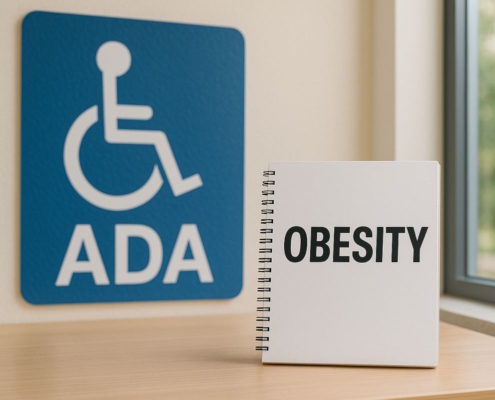How to put in your two weeks notice letter.
We’ll cover what you need to know about how to give your two weeks’ notice in the most professional way. The first step on how to put in your two weeks notice is to read the company’s employee’s handbook.
Author: Douglas Wade, Attorney
Email | Call (800) 484-4610
If you know you want to quit, it’s best stay at your job for two weeks when possible. If you’re an at-will employee, you can leave your job at any time, and provide as little or as much notice of resignation as you like. As a matter of professional courtesy and keeping good relationship with an employer, an employee should give the employer two weeks notice when resigning.
This article will discuss how to give two weeks notice in ten steps as follows:
Step 1: Review The Employment Contract And Employee Handbook
You should start two weeks’ notice letter by reviewing the Employee Handbook and any Onboarding paperwork. The employee’s handbook may mention how to put in your two weeks notice of resignation. Before resigning, employees should review their employment contract. If they are an at-will employee, they risk being told to leave immediately. They should note non-compete clauses and seek legal advice if they need clarification.
Employees should “get their affairs in order” before they quit. They should tie up loose ends, such as:
- Deleting personal files and emails
- Noting the details of any clients or colleagues, they may want to contact
- Have their personal belongings so they are easy to gather
Step 2: Keep the Two-Week Notice Letter Short And Simple.
Keep your two-week notice letter short, professional, and courteous. It is better not to say anything negative in your formal two weeks notice letter of resignation. The company will keep your two-week notice letter of resignation on record forever, and it’s not wise to vent or say anything negative that caused you to resign.
Employees sometimes need to think about what to say when resigning. However, less is more. Stay professional and positive, and keep the details brief. Employees can say, “A great opportunity has presented itself, and I have decided to take it. I have highly enjoyed my time here; thank you for everything.” The manager may have additional questions and may even suggest a counteroffer. Consider this in advance and what it would take to pass up the new job.
Once the resignation and two weeks’ notice are done, your boss can advise how to resign with HR and inform colleagues formally. End the meeting on a positive note by thanking the manager.
Step 3: Draft a Resignation Letter
Employers will sometimes require a resignation letter; generally, it is best to have a formal letter to hand in during the meeting. Although there is no rule on how to draft two weeks notice, the letter should be professional and brief. This resignation letter or two weeks’ notice letter should state that the employee is resigning, that they are giving two weeks’ notice and their final date of employment.
Sample Two Weeks Notice Letter
February 20, 2023
Dear (Supervisor’s name),
Please accept this letter as my formal notice of resignation from (job title) position at (company name). My final day of work will be [last date].
During the next two weeks, I will continue to work diligently to ensure a smooth transition. Please advise if there is anything I can do, whether assisting with recruiting a replacement or helping to train them.
It has been a pleasure working with you. I wish you and the team at (company name) continued success.
Sincerely,
(Your name)
Step 4: Provide A Last Date of Work.
While two weeks’ notice is customary, it is not always required. Employees should have their end date in mind when meeting with their manager to discuss their resignation. Sometimes, two weeks’ notice may not be possible due to starting a new job or moving to a new job. If so, the employee should apologize that two weeks’ notice was impossible and offer to help as much as possible with the transition. The most important thing is to leave the company with a good reputation. This is mainly if the employee stays in the same industry; they may work with colleagues or managers in future jobs.
The employer may ask their employee to stay longer to train a replacement or to help cover a busy period. Unless specified in their contract, the employee can respectfully decline. Employees can negotiate to stay longer if they wish; however, they should be firm on their final date and provide a resignation letter with the correct last date in writing.
Step 5: Verbally Tell Your Supervisor First.
Professionally, you inform your supervisor that you’re resigning in two weeks from your job verbally and on paper. Therefore, have a two weeks notice letter of resignation ready when you announce that you’re quitting.
Employees will often tell their colleagues that they are interviewing for other jobs, but when it is time to resign, the boss needs to hear first. If the employer hears from other people, it can sour the relationship. Put in the two weeks’ notice before telling people.
Step 6: Give Your Two Weeks Notice Letter in Person.
The prospect of giving your two weeks notice of resignation in person can be daunting. However, an employer will appreciate it. The meeting should be scheduled for a time that suits the manager. If a face-to-face meeting is impossible, schedule the meeting for video chat or over the phone.
Step 7: Tell Close Colleagues In Person
Once an employee has formally submitted their two weeks’ notice, they may disclose their resignation to whomever they want. They should seek out mentors and colleagues they are close to and tell them before the news gets around. This will prevent any falling outs and preserve friendships. Employees who work in a team should discuss with their supervisor how to tell their team. While employees can share the news of their resignations online, they should do it professionally without negativity about the job they are leaving. Perhaps a better way would be to share the exciting news of a new job after the final day.
Step 8: Answer Questions
After giving a two weeks notice, employees should be prepared to answer questions from colleagues about what they plan to do next and why they’re leaving. The answer to this question should be positive, perhaps focusing on a new opportunity or a move to another city. Even if employees leave because they hate their job, they should not say so.
Step 9: Make the Transition Smooth
Employees should use their two weeks notice period of resignation to tie up loose ends and ensure their team has instructions for any projects or accounts they will take over. Their supervisor will be able to lay out things that need to be closed down and any training that needs to be given. The employee should be as helpful as possible and ensure the transition goes smoothly. Where appropriate, an employee can help find or train their replacement.
Step 10: Leave on A Positive Note
Even if an employee is glad to leave a company, they should try to leave on a positive note when putting in your two weeks notice of resignation. They may work with colleagues in the future and don’t want to be accused of having a bad attitude.
Employees should be kind and helpful to their colleagues and connect with them on social media before they leave. On the final day, they can send out a goodbye email to thank everyone for their help and support during their time in the role and wish them well for the future.
Quitting a job can be tricky, but staying positive and professional is paramount. Employees should aim to preserve their relationships with everyone.
Have a quick question? We answered nearly 2000 FAQs.
See all blogs: Business | Corporate | Employment
Most recent blogs:
































